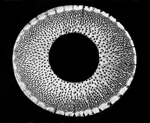|
2000: Tsukitani Tsuneko, Overview of Titles and Notations
- Never Were There Any 'Honkyoku' in the Edo Period, only 'Kyoku'!
尺八曲名 - SHAKUHACHI KYOKU-MEI - "Shakuhachi music titles"
尺八楽譜 - SHAKUHACHI GAKUFU - "Shakuhachi notations"
The term 'Honkyoku' was first introduced by the Kyōto Myōan-ji in 1694 only to clarify a distinction from some
"vulgar" flute ditties that some mid- to late 1600s early 'Komsuō' were apparently enjoying to play!
Hereby a heartfelt recommendation regarding existing historical 'Honkyoku' evidence.
For all of you who are finding pleasure and inspiration in attempting to trace and appreciate the origins, history, characteristics,
varieties and probable transmission lines of classical 'shakuhachi' music pieces, this monumental book ought to be an obligatory ”must study”:
Do note, though, that Tsukitani's study of Edo Period shakuhachi music centers on the titles and notations
of the early Kinko Shakuhachi tradition in particular.
The period investigated is indeed quite short, spanning from the late 1700s till the mid-1800s, approximately 75 years in all.
Therefore the shakuhachi music in question should certainly not be characterized as "ancient".
Read here, Google hits: "How old is ancient"?
Tsukitani Tsuneko,
月谿恒子,
1944-2010:
’Shakuhachi koten honkyoku no kenkyū’,
尺八古典本曲の研究,
"Classical Shakuhachi Honkyoku Research". Shuppan Geijutsu-sha, Tokyo, 2000, 287 pages.
Two especially essential pages there to be investigated:
On pages 61 to 62 you find Prof. Tsukitani’s chronologically presented bibliography of known collections of historical shakuhachi music notations (Jap.: 'gakufu',
楽譜).
The oldest of such notation examples mentioned there is dated 1769 - 21 sources in all.
On page 62 you also see Tsukitani’s chronological list of historical publications presenting lists of 'shakuhachi kyoku' titles.
The oldest such example there is dated 1732 - 15 in all.
Do note: The only appearances of the term 'Honkyoku' you see there, on any of those several pages, are dated 1847 and 1866, respectively.
So: 'Honkyoku' was definitely not a commonly used Edo Period term before somehow as late as in 1847 and 1866,
i.e. towards the very last days of the Tokugawa Era that ended in 1867.
Regrettably, almost all of those mentioned original documents are seriously difficult to locate, downl0ad, and get a direct, close view of, it appears.
Still, so did Prof. Tsukitani Tsuneko, indeed, well before before the year 2000.
Good luck with your future 'shakuhachi kyoku' detective work.
Do not uncritically trust in whatever your shakuhachi teachers are telling you :-)
Shakuhachi music titles mentioned in historical documents, 1732-1827, plus two yet undated sources, as of the year 2000:
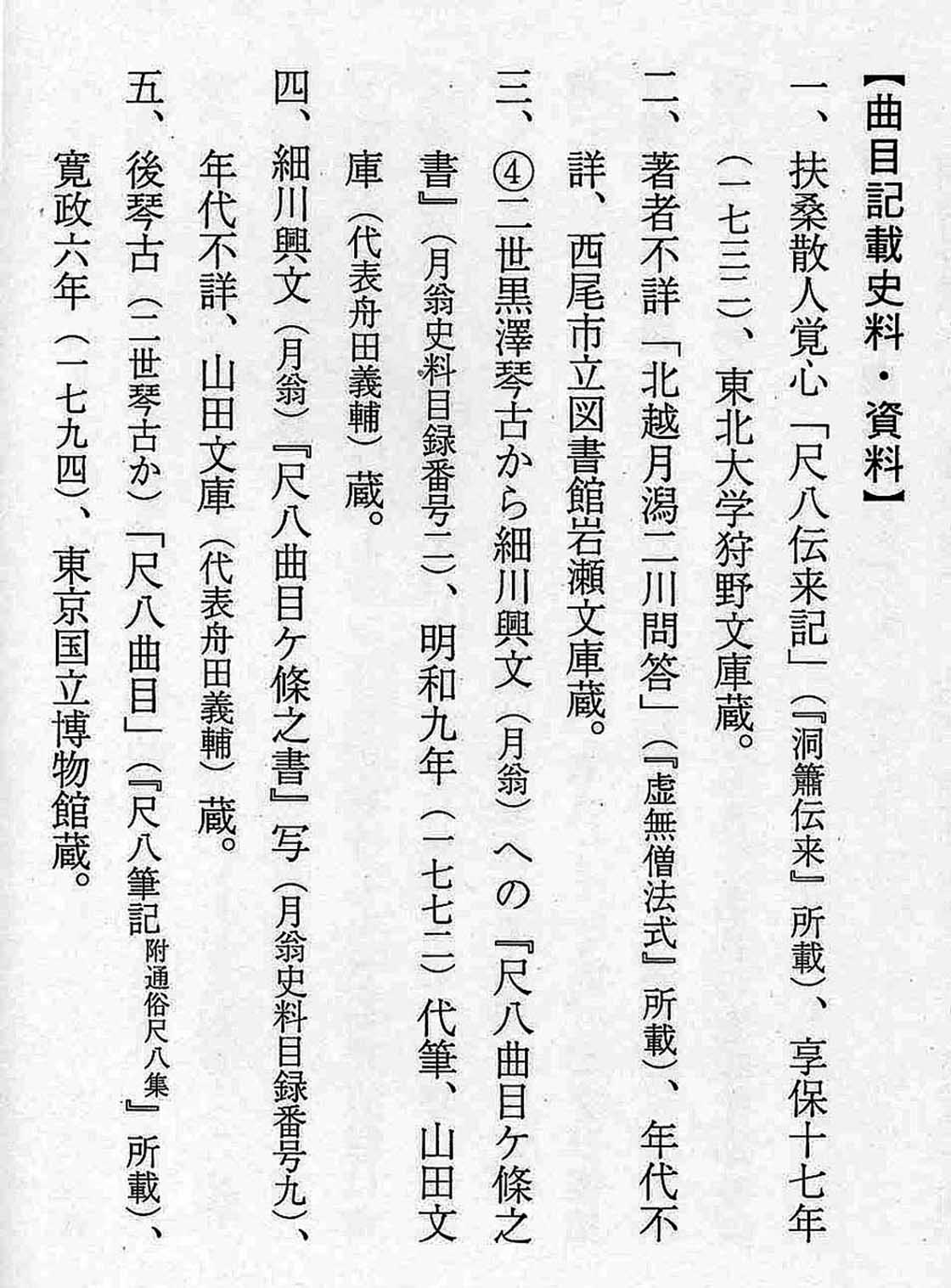
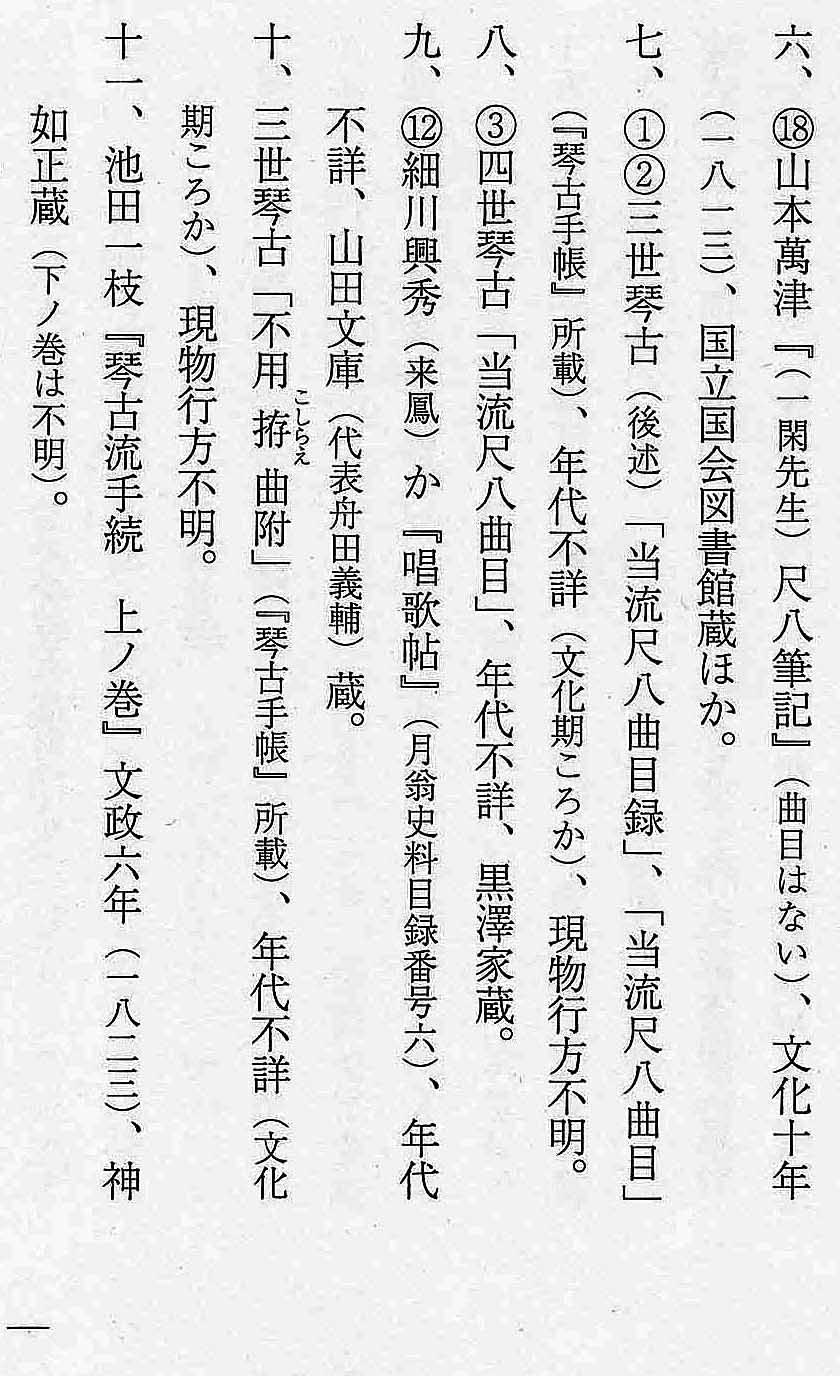
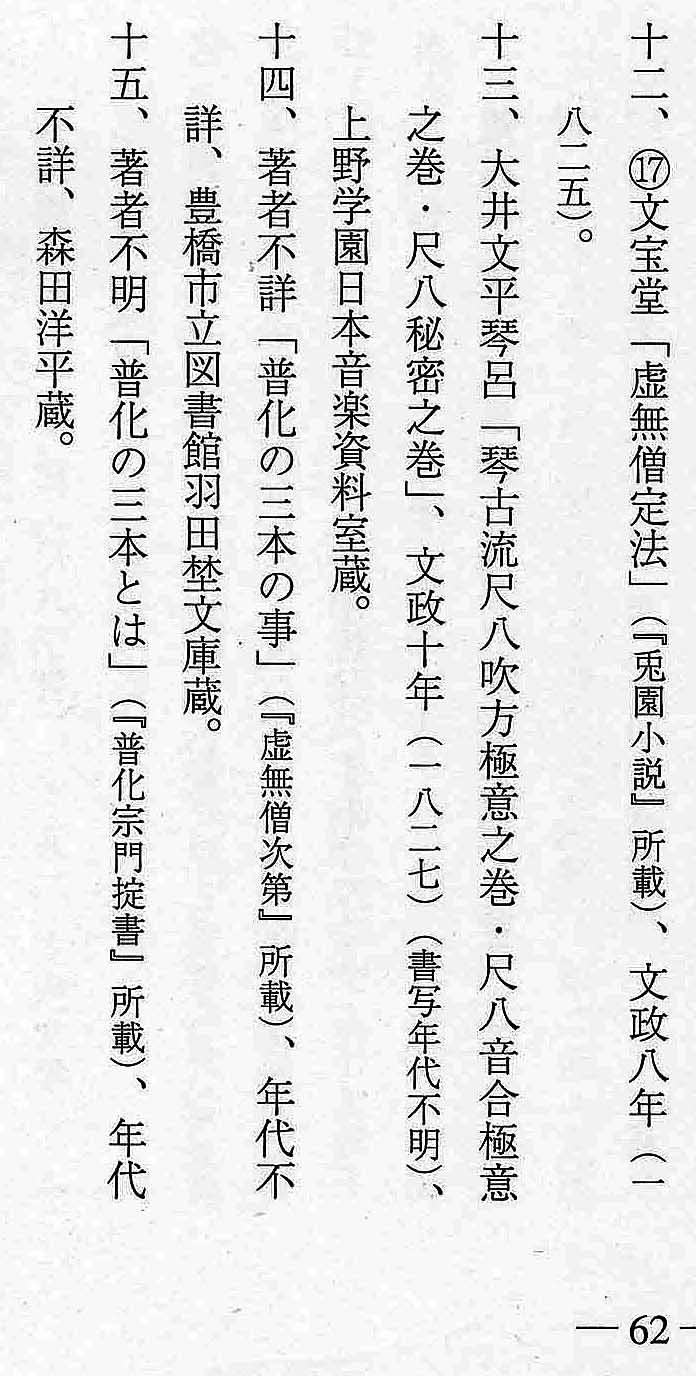
Shakuhachi music notations collections, 1769-1866.
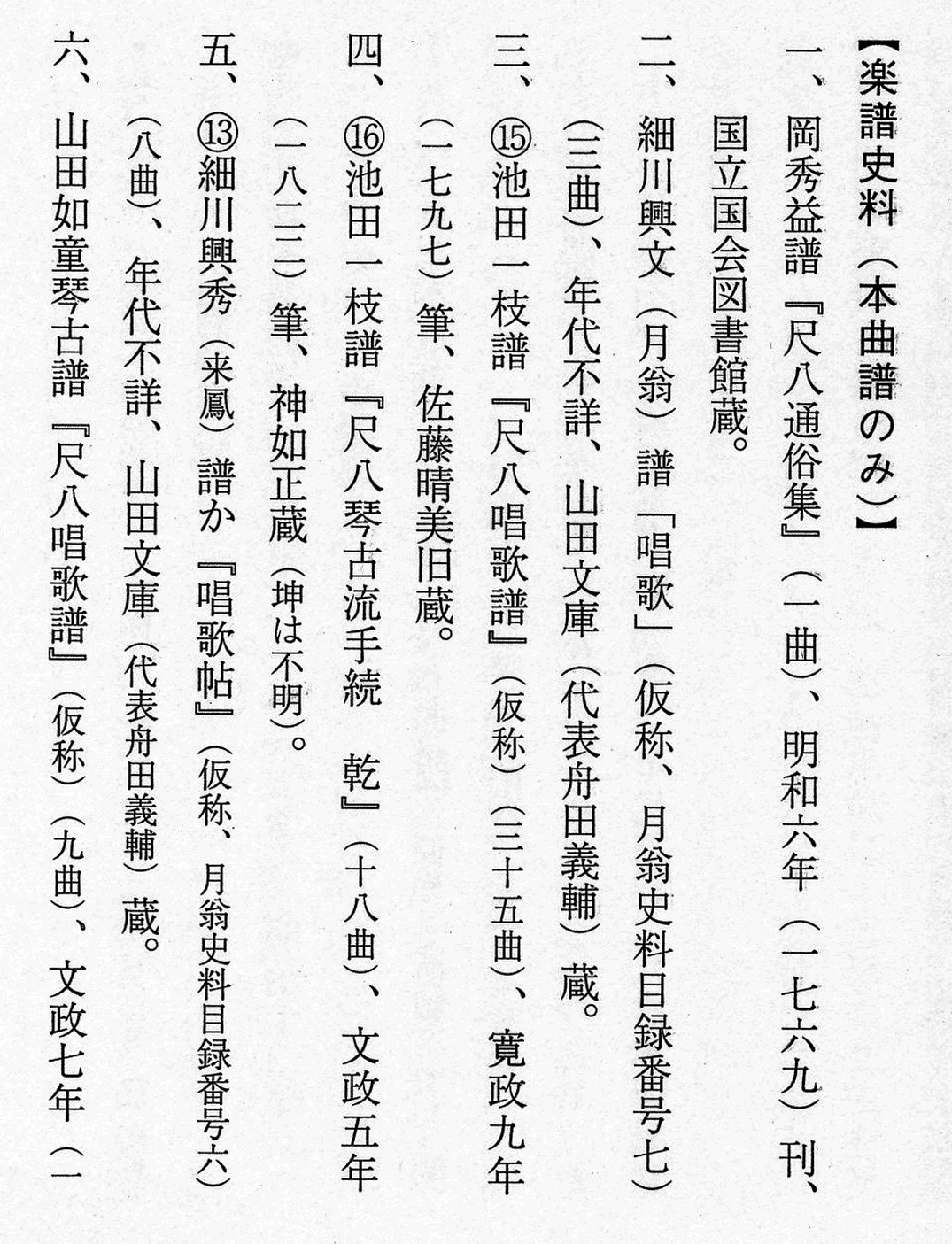
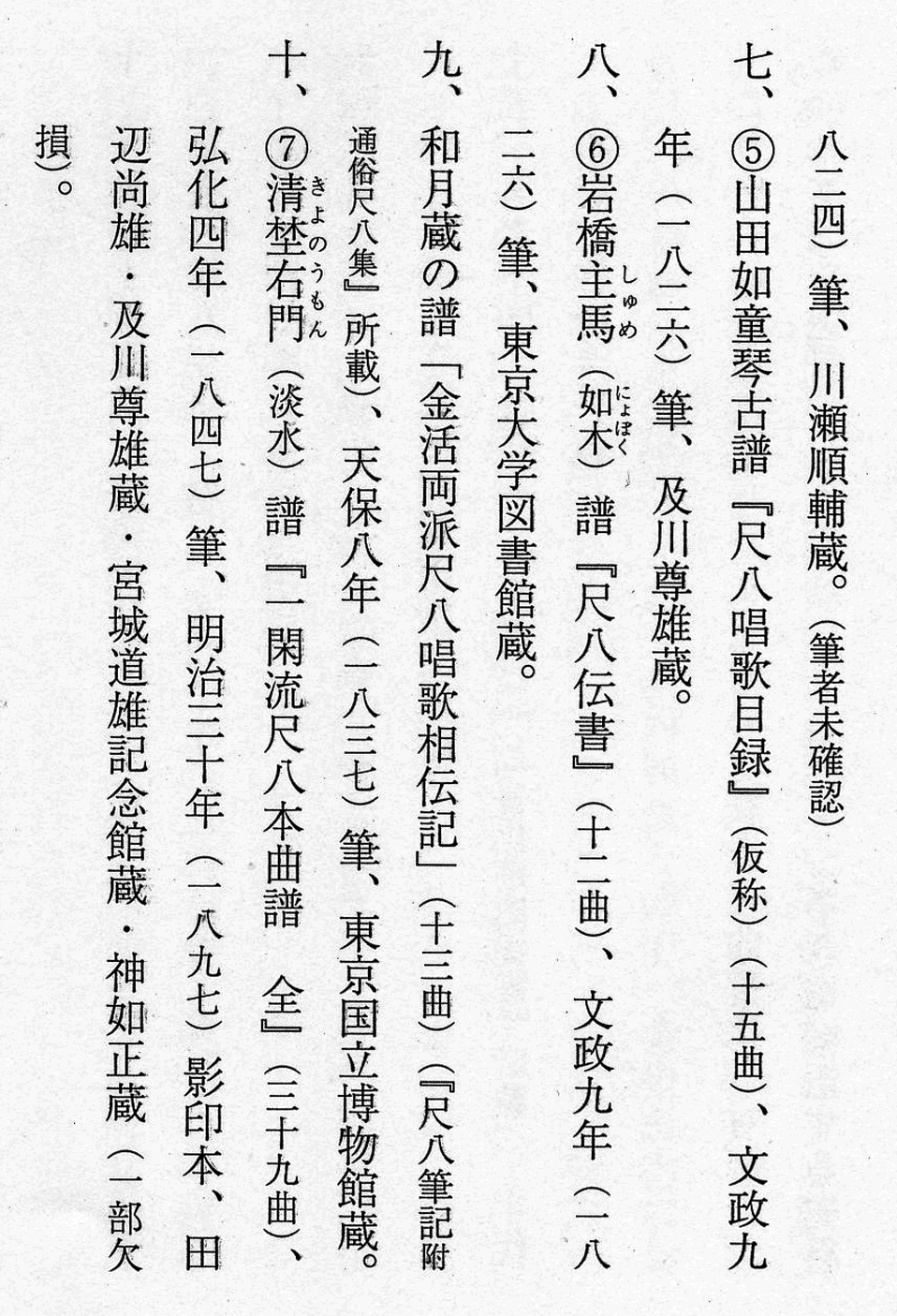
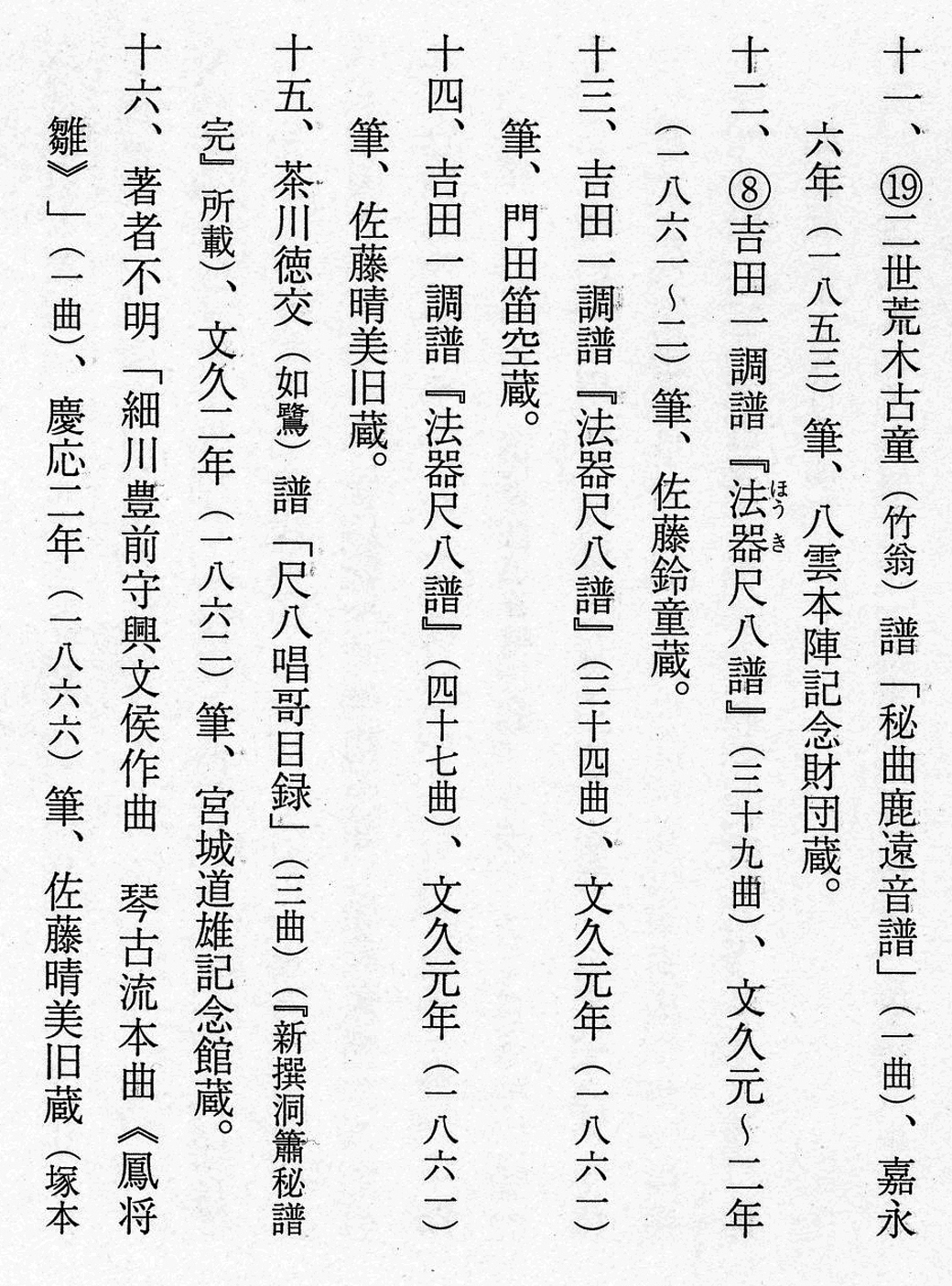

|
|
